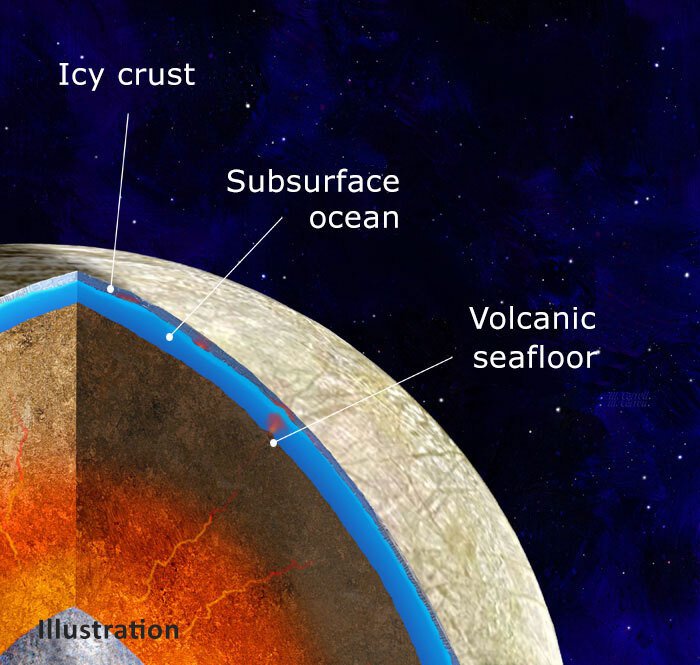Scientists are fairly certain Europa has the water, maybe twice as a lot because the water in all of Earth’s oceans. Jupiter’s sturdy gravity discipline always tugs on Europa because it orbits its guardian planet each three-and-a-half days, squeezing and flexing the moon’s insides, and producing warmth by tidal forces. These forces might drive hydrothermal vents the place the underside of Europa’s ocean meets the moon’s rocky inside.
That is what separates Europa, Earth, and Saturn’s small moon Enceladus—which additionally has a buried ocean and erupting plumes—from each different object within the Photo voltaic System, in keeping with Cynthia Phillips, planetary geologist and Europa Clipper undertaking employees scientist at JPL.
“In these worlds, you’ve an ocean layer on high of a rock layer,” she mentioned. “That’s necessary as a result of that’s what we’ve right here on the Earth, and on the backside of Earth’s oceans, the place that ocean layer touches the rock, you’ll be able to have all types of attention-grabbing chemical reactions happen, and hydrothermal programs.”

Credit score:
NASA/JPL-Caltech/Michael Carroll
Scientists’ findings counsel that the inside of Jupiter’s moon Europa might include an iron core, surrounded by a rocky mantle in direct contact with an ocean underneath the icy crust. New analysis fashions how inner warmth might gasoline volcanoes on the seafloor.
Credit score:
NASA/JPL-Caltech/Michael Carroll
On the backside of Earth’s oceans, like at Europa, organisms should depend on an power supply aside from the Solar. Hydrothermal vents in Earth’s oceans present a heated surroundings teeming with primitive life types, even in harsh circumstances a number of miles deep.
“We don’t count on fish and whales that sort of factor, however we’re curious about whether or not Europa might assist easy life—single-celled organisms,” Pappalardo mentioned.
After all, Europa Clipper will not be capable of burrow down the handfuls of miles to achieve these theorized vents. Scientists should deduce their presence by different knowledge. And a direct detection of any residing organism on Europa should watch for a future mission. Scientists do not suppose life might survive on Europa’s floor as a result of it’s bathed in excessive radiation from Jupiter’s magnetosphere.
“If there may be life on Europa, on this liveable surroundings that we’re exploring, it will be beneath the ocean, so we wouldn’t be capable of see it,” Buratti mentioned. “We’re in search of chemical substances on the floor, natural chemical substances which are the precursors to life. There are dream issues we might observe like DNA or RNA, however we don’t count on to see these.”
Source link
#NASA #launches #mission #discover #frozen #frontier #Jupiters #moon #Europa
Unlock the potential of cutting-edge AI options with our complete choices. As a number one supplier within the AI panorama, we harness the facility of synthetic intelligence to revolutionize industries. From machine studying and knowledge analytics to pure language processing and laptop imaginative and prescient, our AI options are designed to boost effectivity and drive innovation. Discover the limitless prospects of AI-driven insights and automation that propel your small business ahead. With a dedication to staying on the forefront of the quickly evolving AI market, we ship tailor-made options that meet your particular wants. Be part of us on the forefront of technological development, and let AI redefine the way in which you use and achieve a aggressive panorama. Embrace the longer term with AI excellence, the place prospects are limitless, and competitors is surpassed.






























